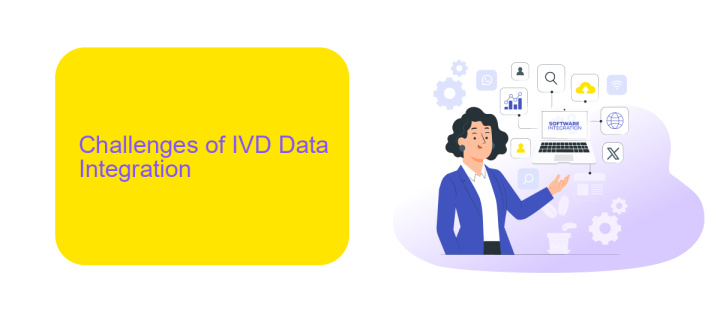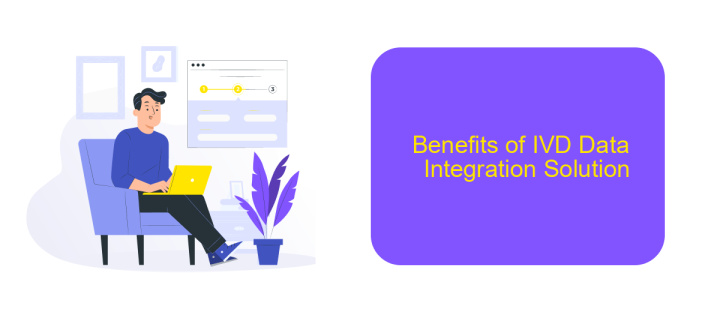IVD Data Integration Solution
In today's rapidly evolving healthcare landscape, integrating in vitro diagnostic (IVD) data is crucial for enhancing patient care and operational efficiency. Our IVD Data Integration Solution seamlessly consolidates diverse diagnostic data into a unified platform, enabling healthcare providers to make informed decisions quickly. Discover how our innovative solution can transform your laboratory operations and improve patient outcomes.
Introduction
In the rapidly evolving field of In Vitro Diagnostics (IVD), seamless data integration is crucial for enhancing operational efficiency and ensuring accurate diagnostics. An effective IVD data integration solution enables healthcare providers to streamline data management, reduce manual errors, and improve patient outcomes. By integrating various data sources, laboratories can achieve a holistic view of patient information, which is essential for informed decision-making.
- Automated data transfer between diagnostic devices and central databases
- Real-time data synchronization for timely analysis
- Enhanced data security and compliance with regulatory standards
- Scalable solutions to accommodate growing data volumes
One such tool that facilitates seamless IVD data integration is ApiX-Drive. This service allows for easy configuration and management of data flows between different systems, ensuring that all relevant information is accurately captured and readily accessible. By leveraging ApiX-Drive, laboratories can significantly reduce the complexity of data integration, leading to more efficient operations and improved diagnostic accuracy.
Challenges of IVD Data Integration

Integrating In Vitro Diagnostics (IVD) data presents numerous challenges, primarily due to the diverse range of data formats and sources involved. Laboratories and healthcare institutions often use different systems and platforms, leading to inconsistencies and compatibility issues. Ensuring data accuracy and completeness during the integration process is another critical hurdle, as any discrepancies can significantly impact patient outcomes and research findings.
Moreover, maintaining data security and compliance with regulations such as GDPR and HIPAA adds another layer of complexity. Organizations must implement robust encryption and access control measures to protect sensitive patient information. Solutions like ApiX-Drive can help streamline the integration process by providing a versatile platform that connects various systems and automates data transfers. This reduces manual intervention and minimizes errors, making the integration more efficient and reliable.
IVD Data Integration Solution: Components and Architecture

The IVD Data Integration Solution encompasses various components and a robust architecture designed to streamline data management and analysis. Central to this solution are several key elements that work in tandem to ensure seamless data integration and real-time accessibility.
- Data Sources: These include laboratory information systems (LIS), electronic health records (EHR), and other diagnostic devices that generate valuable data.
- Integration Middleware: This component acts as a bridge, facilitating the smooth transfer of data between disparate systems. Tools like ApiX-Drive can be employed to simplify and automate these integrations.
- Data Storage: A centralized data repository where all integrated data is securely stored and managed.
- Data Analytics: Advanced analytics tools that process and interpret the integrated data to provide actionable insights.
- Security and Compliance: Mechanisms to ensure data privacy and adherence to regulatory standards.
The architecture of the IVD Data Integration Solution is designed to be scalable and flexible, accommodating the growing needs of healthcare providers. By leveraging services like ApiX-Drive, organizations can automate and streamline the integration process, ensuring that data flows seamlessly across all systems, enhancing operational efficiency and patient care.
Benefits of IVD Data Integration Solution

Integrating In Vitro Diagnostics (IVD) data into a unified system offers numerous advantages for healthcare providers and laboratories. Enhanced data accuracy and streamlined workflows are among the primary benefits, leading to improved patient outcomes and operational efficiency.
Moreover, an IVD data integration solution enables real-time data access, allowing healthcare professionals to make informed decisions promptly. This not only accelerates the diagnostic process but also reduces the likelihood of errors associated with manual data entry.
- Improved data accuracy and consistency
- Streamlined workflows and reduced manual entry
- Real-time data access for timely decision-making
- Enhanced patient outcomes through better diagnostics
- Cost savings through efficient resource utilization
For seamless integration, services like ApiX-Drive can be leveraged to automate data transfers between various IVD systems and electronic health records (EHR). By using such integration platforms, healthcare facilities can ensure that their data flows smoothly, enhancing both productivity and patient care.


Conclusion
The integration of IVD data through advanced solutions represents a significant leap forward in the healthcare industry. By enabling seamless data exchange between various diagnostic devices and healthcare systems, these solutions enhance the accuracy, speed, and efficiency of patient care. The streamlined data flow not only reduces manual errors but also facilitates better clinical decision-making, ultimately leading to improved patient outcomes.
ApiX-Drive stands out as a robust tool for configuring these integrations effortlessly. Its user-friendly interface and powerful features allow healthcare providers to connect disparate systems without the need for extensive technical expertise. By leveraging ApiX-Drive, organizations can ensure that their IVD data integration is both efficient and reliable, paving the way for a more interconnected and responsive healthcare ecosystem. In conclusion, the adoption of IVD data integration solutions, supported by tools like ApiX-Drive, is crucial for advancing modern healthcare practices.
FAQ
What is an IVD Data Integration Solution?
How does data integration benefit diagnostic laboratories?
What are the key features to look for in an IVD Data Integration Solution?
How can I implement an IVD Data Integration Solution in my lab?
What are the challenges of integrating IVD data and how can they be addressed?
Time is the most valuable resource for business today. Almost half of it is wasted on routine tasks. Your employees are constantly forced to perform monotonous tasks that are difficult to classify as important and specialized. You can leave everything as it is by hiring additional employees, or you can automate most of the business processes using the ApiX-Drive online connector to get rid of unnecessary time and money expenses once and for all. The choice is yours!

